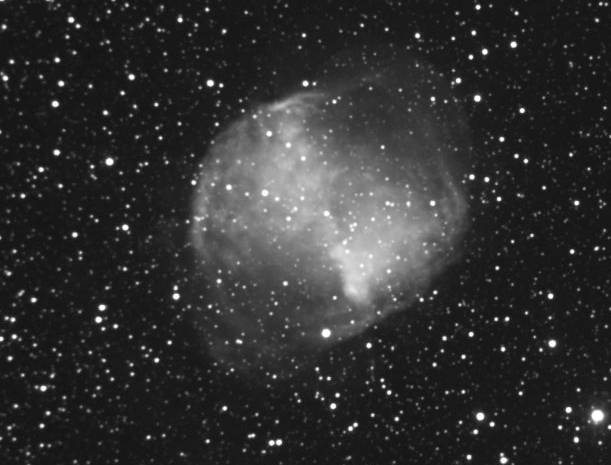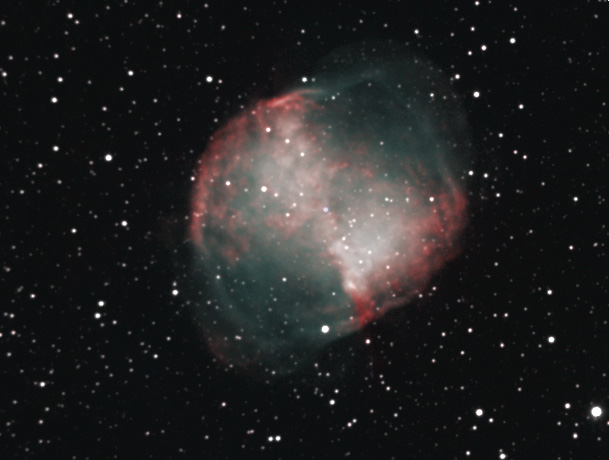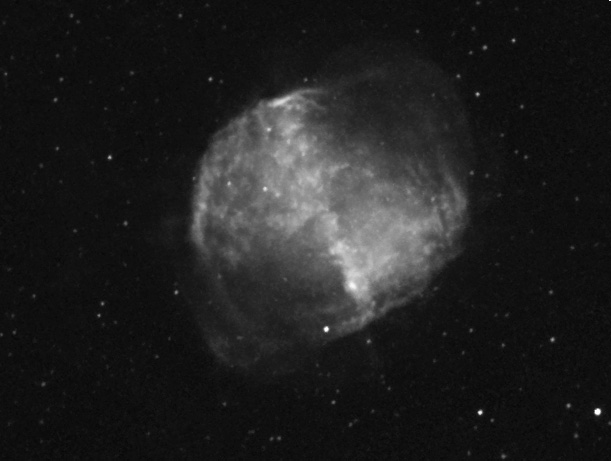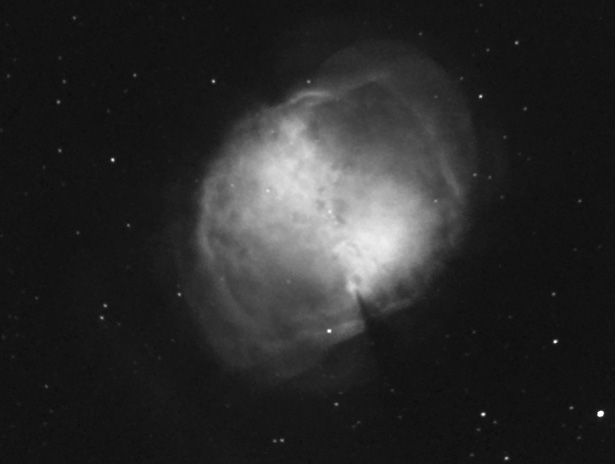

Conditions: aquired at my observatory in Denmark, in Sept. 2004 (luminance) and Sept. 2002 (H-alpha + OIII). On both evenings: no moon, a bit of haze, weak wind.
Setup: Meade 8" SCT F10, AO7 guider, ST7E (with f/6.3 reducer, filters: H-alpha, OIII), ST10XE (no reducer, binned 2x2, filter: IR reject) (here's a picture of this setup). With the ST10XE I also used a DF-2 focusser. Instead of using a bulky filter wheel I have a special method of filter mounting when working with the AO7.
Exposure time: L: 5x500 sec; H-alpha: 5x1000 sec; OIII: 4x1200 sec.
Processing outline (Mira, MaximDL, Registar, CCDsharp, Photoshop): Basics: dark subtracted, flat fielded, masked hot/cold pixels, de-bloomed with Wodaski's plugin, registered, median/avr combined, LR deconvolution x 2. To reduce the prominence of stars while boosting M27 contrast I synthesized a luminence channel by adding the H-alpha and OIII images (appropriately scaled) to the IR-reject image. The R,G,B channels were assigned as H-alpha,OIII,OIII. Levels and curves were applied in photoshop in addition to a bit of final color balancing.
Typical AO7 guiding frequency was 10 Hz with the IR reject filter and ~0.3 Hz with the narrowband filters. The stellar FWHM on the raw images is ~3.5 arcsec, after 2xLR deconvolution it is ~3.2 arcsec.
This image is a brew of new and old data with pretty limited integration times. To minimize noise I tried to avoid pushing the processing too far. The individual filtered images are shown below. Note how dominating the stars are in the IR-reject image, as compared to the special LRGB composite above:
IR-reject:
H-alpha:
OIII:
Here's my main page where you can see more of the work I have done so far.
Comments greatly appreciated! (mikael@leif.org)